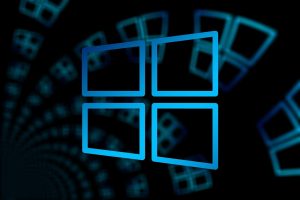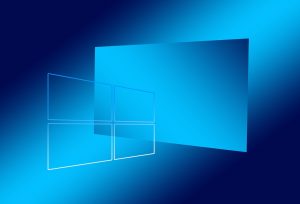The History and Development of Unix-Based Operating Systems

Unix has exerted an immense, often unseen influence over modern technology. Originally developed over 50 years ago, Unix and its derivatives like Linux form the foundation for many devices, services, and computing innovations worldwide. Tracking the history and ongoing development of Unix systems reveals a story of collaboration and conflict, market disruption and consolidation. The legacy still shapes platforms across servers, clouds, mobiles, embedded systems, and beyond today.
Early Days at Bell Labs and Beyond
The Unix epoch began in 1969. AT&T programmers Ken Thompson and Dennis Ritchie had helped build an earlier time-sharing system called Multics. But the mainframe project struggled with cost and complexity issues at Bell Labs. Instead, Thompson wanted a simpler system for his own use on scavenged computer hardware.
Over several months, he coded the first Unix version using an antiquated PDP-7. The minimalist text-based environment provided basic I/O, filesystems, pipelines, and an interpreter for the B programming language Thompson preferred. Named Unics as a pun playing off Multics, the platform quickly attracted interest from colleagues.
Within a couple years, Unix added reimplemented tools in the new C programming language created by Ritchie. Released internally in 1973, Unix v4 with C represented a pivotal modernization. It brought enhanced portability, modularity, maintenance, speed, and capabilities. For the first time, Unix servers could handle multiple users productively.
Demand for Unix grew rapidly across Bell Labs departments. By 1975, Ritchie and Thompson oversaw an enhanced v5 release distributed more widely within AT&T. V6 polished additional skills like pipes and streams. Commercialization began through educational copies to expand the ecosystem. But Unix source code remained proprietary to Bell Labs throughout the 70s and early 80s during this incubation period.
The Open Source Movement Dawns
Eventually, AT&T did begin licensing Unix to third parties interested in the platform. But the licenses proved very expensive, limiting adoption mostly to large organizations. And licensees still lacked affordable access to technical source code details needed for modification or porting.
Gradually, collaborators like University of California, Berkeley negotiated more cost-effective and modifiable variants like the BSD series for students and research. However, full-fledged open source Unix alternatives remained elusive. The proprietary licenses and closed development model limited how innovators could build on or harden Unix foundations.
In 1984, Richard Stallman spearheaded the Free Software Foundation to promote UNIX-like freedom without the AT&T restrictions. After initial struggles, they released the first GNU components like Emacs for an envisioned GNU OS. However, the GNU kernel and core OS lagged as the massive undertaking outgrew their early resources.
Then in 1991, Linus Torvalds independently began his own non-commercial Unix-inspired project. Rather than seeking to recreate entire legacy environments, the 21-year old Finnish student aimed simply for a usable, free alternative to Minix for his new PC hardware.
Sharing initial Linux source code and toolchains openly, his grassroots approach surmounted roadblocks stalling GNU. Leveraging the internet and embracing collaborative development, Linux gained developer support that fast outpaced the proprietary Unix vendors. Releases like Softlanding Linux System brought early mainstream access in 1992.
The next year brought Slackware, Red Hat, Debian, SUSE and other distros still powering Linux’s expansion today. The non-commercial nature, open source code, and grassroots enthusiasm sparked exponential evolution of Linux unhindered by proprietary barriers. Coupled with GNU, Linux finally provided the missing kernel for a fully open source Unix alternative by the mid 90s, forever changing the industry.
Battles for Dominance
As Linux matured and commercial providers like Red Hat added enterprise refinements, large Unix vendors facing eroding market control reacted by introducing more openness and affordability themselves. 1993 marked the first specification release for POSIX, IEEE’s portable Unix-style standard. Major vendors like Sun Microsystems made Solaris available for low-cost x86 servers rather than just premium RISC systems.
In the late 90s, Sun acquired software innovator Netscape to obtain Solaris licenses in hopes of staving off Linux and Windows NT server momentum. Other consolidations like SCO’s purchase of Unix assets signaled fading industry prospects for proprietary models. Startups like VA Linux went public with soaring valuations highlighting Wall Street’s embrace of open technology for the future.
Although commercial grade Linux continued its march, incumbent Unix vendors did manage to slow migrations somewhat by opening source code access to customers. Efforts modernizing aging codebases accompanied the changes. Sun Microsystems open sourced Solaris in 2005 under CDDL licensing after losing server market leadership to Linux providers. Apple made Darwin, the basis for macOS, free software based on NeXT tools acquired earlier. Parts of IBM AIX and HP-UX gained open source options to remain relevant.
However, licensing disagreements and territorial squabbles between major backers hampered the overall open source Unix ecosystem from presenting a unified front against Windows inroads. Costly litigation between SCO Group over Linux property rights dragged on for years. Format wars splintered between RPM Package Manager and Debian packages disrupted Linux commercialization. The Distributed Management Task Force industry standards group formed in 1992 to help mediate common management frameworks across competing providers with mixed results.
Rise of the Clouds
By the early 2000s, most Unix providers recognized open source as the inevitable path forward collaboratively or competitively. Linux especially dominated discussions even while proprietary Unix maintained substantial market share. Rapid internet expansion and new programming models like LAMP stacks amplified usage of open solutions. Source code availability, security mindsets, modular architecture, broad toolchains, passionate talent pools, and cloud native priorities kept Linux ascendant as aging Unix giants faded from prominence. Corporate data center renovations eyeing lower costs powered the changes.
As cloud computing emerged, Linux earned designation as the de facto standard host forfueling the world’s top hyperscale clouds alongside groups like OpenStack. Linux flexibility allowed customizations optimizing performance, density, storage, and costs – key requirements the cloud giants demanded. Today AWS, Microsoft Azure, Google Cloud, IBM Cloud, Oracle Cloud, Salesforce, VMware, Alibaba, and other major providers overwhelmingly rely on Linux infrastructure under the hood.
The wide range of Linux distributions noticeably consolidated around leading options like RHEL and Ubuntu Server to help maximize cloud-ready capabilities. Open source groups also collaborated more smoothly as aging rivalries softened and community priorities aligned around cloud native tooling for new marketplace demands. This cooperation strengthened sustainable open source models, further accelerating cloud adoption and cementing future direction.
Current Landscape
Presently in 2023, proprietary Unix use wanes outside legacy deployments. AIX, HP-UX, and Solaris hang on within some niche Oracle, IBM, and Fujitsu customer bases but ceded most ground to open systems. Apple’s Darwin subsystem remains firmly entrenched as the software anchor for macOS, iOS, watchOS, and tvOS devices. Otherwise most Unix-like activity centers on Linux and BSD distributions today.
Server-side Linux now runs across well over 70% of today’s public cloud instances while also dominating traditional data center infrastructure, web hosting, embedded devices, and supercomputing. As a result, Linux talent and tools permeate IT shops large and small. Company technologies from AI to mobile to AR leverage Linux somewhere behind the scenes. No competitive OS maintains comparable versatility and ubiquity.
However, fragmentation frustrates efforts raising end user desktop adoption closer to Windows levels. Comparatively complex configuration options also hinder novice administrators. Hardware and software incompatibilities issues linger across less standardized distros despite major improvements. For common business use rather than servers, Linux still poses adoption barriers.
Most everyday computer users still prefer Windows or macOS for usability polish. But Chrome OS and Android do leverage Linux kernels to enable thinner, web-centric designs popular for mobile and niche needs. Strengths like security, flexibility, and efficient resource usage make embedded Linux ideal for smart homes, autonomous vehicles, industrial controls, and comunications infrastructure widely. Evergreen maintaince models also ensure long term support measured in decades for commercial, scientific, and defense deployments.
For servers though, clear preferences emerged around Red Hat Enterprise Linux, SUSE Linux Enterprise Server, and Ubuntu Server for commercial grade needs. CentOS Stream, Rocky Linux, AlmaLinux, and other community spins of RHEL also bring open source stability without costly subscriptions. Debian, openSUSE, Gentoo, Arch, and Fedora appeal more to experienced administrators seeking hands-on customization or community innovations approaching possible inclusion in future upstream editions. Therefore, consolidating Linux fragmentation into focus areas now provides prudent strategic direction.
Future Trajectory
Bit by bit, Linux and other Unix flavors erased proprietary alternatives across enterprise computing to stand ubiquitous currently from mobile to cloud. Developer momentum, ecosystem richness, modular flexibility, passionate communities and pragmatic business models catalyzed the ascension. Only gaming, desktop productivity, and certain enterprise application categories evade Linux saturation today in favor of Windows – but even those barriers fade gradually each year through projects like Steam Play and web application maturity.
Looking ahead, no competitive operating system matching the Unix architecture seems poised to derail Linux or BSD relevance across servers, mobiles, clouds, IoT, and beyond. Reasonable doubts instead surround whether alternatives may materialize through paradigm shifts. For example, web assembly, containers, serverless functions, microservices, AI devops, mesh networks, ambient computing, neural interfaces, quantum, bio/optical, and other emerging platforms vie to become the next major disruptions redefining future computing needs unmet by legacy systems.
Many cutting edge frameworks aspire moving beyond current OS constraints entirely rather than just competing feature to feature. Linux generally keeps pace absorbing higher level languages like Go, Rust, and Swift to ensure continuing alignment broadening developer accessibility. But eventually revolutionary tech could upend OS roles the way Unix itself displaced legacy mainframes over past decades of industry evolution.
Of course crystal ball forecasts constantly fall short, especially given technology’s exponential change rate. Rather than attempt predicting specifics decades out, IT strategists should acknowledge the perpetual cycles of creative destruction and commoditization that define all progress. No paradigm persists permanently. Linux and open source may yet face game changing threats or even fracture from internal dissent as sociotechnical inflection points inevitably arrive.
Therefore, the wise guidance going forward echoes the DevOps mentality energizing today’s visionaries already. Remain focused on iterative improvement meeting current business challenges while sustaining platform fundamentals that navigate uncertainty. But also acknowledge that tomorrow’s transformative solutions may arise unexpectedly from unconventional sources. The next Unix is probably already brewing in some garage project or academic paper awaiting its catalyst moment.
The enduring legacy across over 50 years of commercial, academic, and hobbyist collaboration makes Unix itself the quintessential story of sustainable software development. From Bedrock to NeXT to Linux and beyond, the encompassing lessons it shaped around iterative delivery, modular architecture, vibrant communities, and opening access currently empower all modern digital innovation. Whatever operating systems ultimately emerge next in the perpetual technology climb, they’ll assuredly carry forward the resilient Unix philosophy for future generations.








